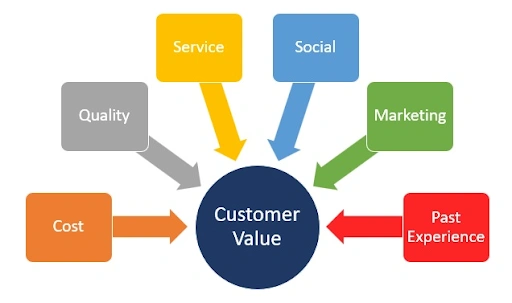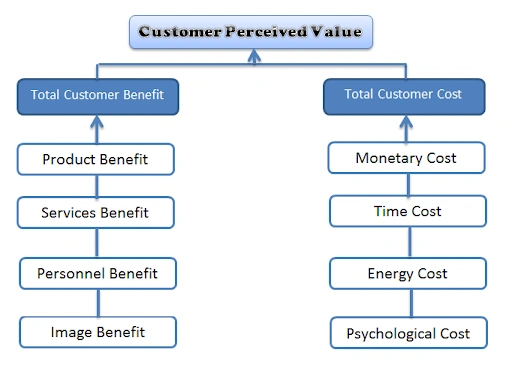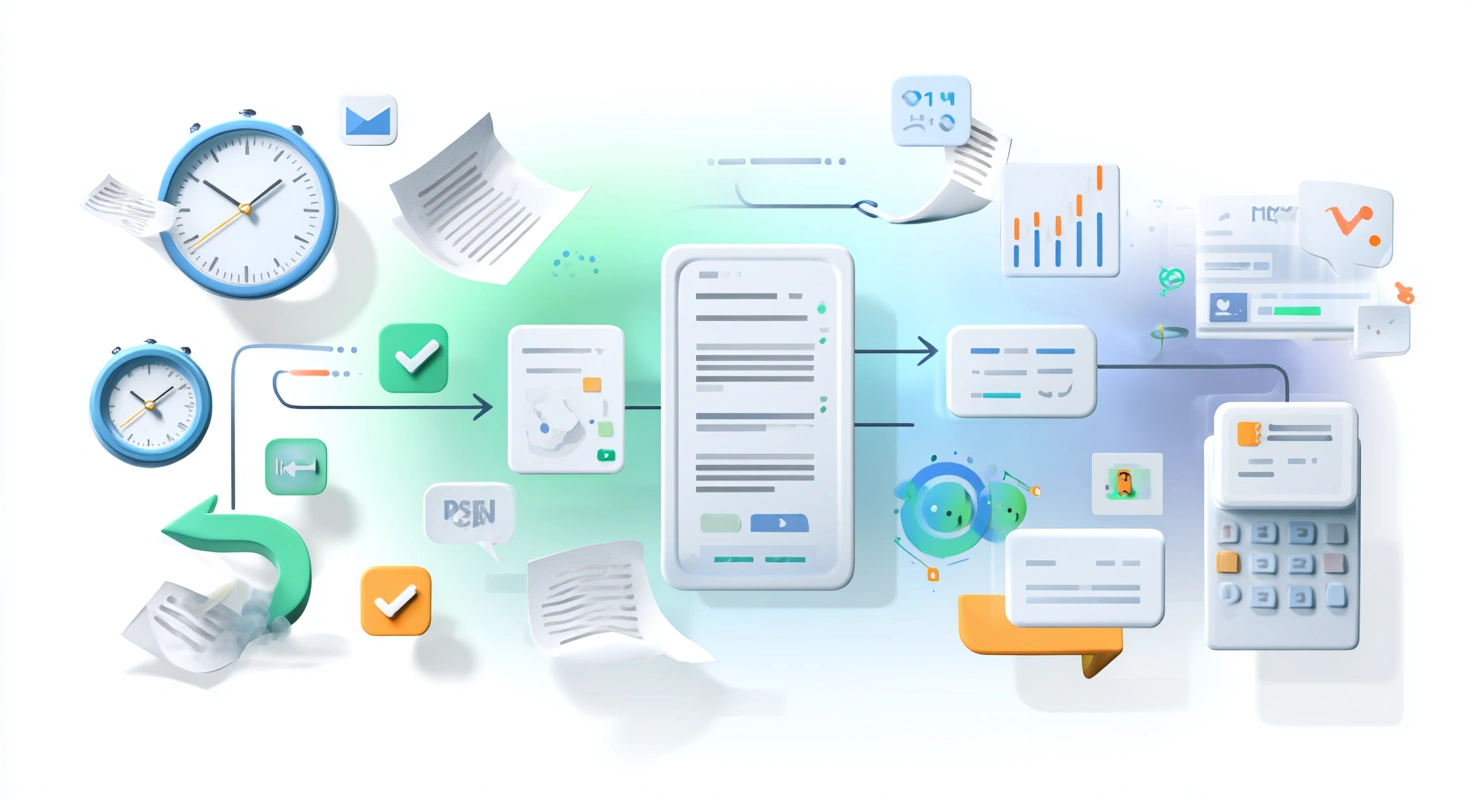Customer value drives long-term business growth by shaping experiences, loyalty, and profitability. This blog explores what is customer value, its journey, and impact across stages. Discover real-world examples and how Convin enhances customer value using AI insights to strengthen relationships and boost customer lifetime value (CLV) for enterprises.
Customer value is the perceived benefit a customer gains from a product or service compared to its cost, influencing satisfaction, loyalty, and long-term engagement with a brand or business.
Let Convin show you how to automate more wins!
What Is Customer Value and Why Does It Matter?
Customer value refers to the perceived worth of a product or service in the customer's eyes. It is the balance between the benefits of a product or service and the costs incurred to acquire it. This value is subjective and varies among customers based on their needs, preferences, and expectations.

Key Elements:
1. Benefits: These include functional benefits (the product’s performance), emotional benefits (how the product makes the customer feel), and social benefits (how the product affects the customer’s social status).
2. Costs: These include monetary costs (price), time costs (how long it takes to purchase and use the product), and effort costs (the energy expended in obtaining and using the product).
Characteristics of Customer Value
Customer value has several defining characteristics that make it a crucial aspect of business strategy:
1. Subjectivity: Customer value is highly subjective and varies from one customer to another. It is influenced by individual preferences, needs, and expectations.
2. Dynamic Nature: Customer value changes over time as customer needs and market conditions evolve. Companies must continually adapt to maintain or enhance their perceived value.
Customer Value Proposition

A customer value proposition (CVP) is a clear statement that explains how a product or service solves a customer’s problems or improves their situation, delivers specific benefits, and tells the customer why they should purchase from one provider over another.
Components of a Strong CVP:
1. Relevance: Explains how the product or service meets the customer's needs or solves their problems.
2. Value: Highlights the specific benefits that the customer will receive.
3. Differentiation: Shows why the product or service is unique or better than the competition.
Example of a CVP Using Convin:
"Convin’s AI-backed contact center software enhances agent performance and boosts customer experience by delivering real-time guidance and automated coaching, ensuring a 21% increase in sales and a 27% increase in customer satisfaction."
Importance of Customer Value
Understanding and delivering customer value is essential for business success. Here are five reasons why customer value is important:
1. Customer Retention: High perceived value increases customer loyalty and repeat purchases.
2. Competitive Advantage: Businesses that deliver superior value stand out from their competitors and attract more customers.
3. Profitability: Satisfied customers are willing to pay more, increasing the business's revenue and profit margins.
4. Customer Satisfaction: High value ensures customer satisfaction, promoting positive word-of-mouth and brand reputation.
By focusing on these aspects of customer value, businesses can enhance their overall performance and achieve long-term success.
Nail every KPI with Convin!
How Can Businesses Understand Customer Lifetime Value (CLV)?
Customer Lifetime Value (CLV) is a metric that estimates the total revenue a business can expect from a single customer account throughout the business relationship.
CLV is a crucial indicator of a company's long-term success and customer retention strategies. It helps businesses understand the value each customer brings over time, enabling them to allocate resources effectively to maximize profitability.
Importance of Customer Lifetime Value
Understanding and optimizing CLV is essential for several reasons:
1. Improved Customer Retention: Focusing on increasing CLV encourages businesses to invest in customer retention strategies, which are often more cost-effective than acquiring new customers.
2. Better Resource Allocation: CLV helps identify the most profitable customer segments, allowing businesses to allocate marketing and sales resources more effectively.
3. Customer Relationship Management: Focusing on CLV fosters stronger customer relationships, enhancing customer satisfaction and loyalty.
Customer Lifetime Value Formula
The basic formula to calculate CLV is:

Components:
1. Average Purchase Value (APV): The average amount a customer spends per purchase.
2. Purchase Frequency (PF): The average number of purchases a customer makes within a specific period.
3. Churn Rate: The rate at which customers stop doing business with the company.
4. Profit Margin: The percentage of profit a company retains after accounting for costs.
Customer Lifetime Value Calculator
A Customer Lifetime Value Calculator automates the CLV calculation process by inputting relevant data points. By inputting these values, businesses can quickly and accurately determine their CLV.
Lifetime Value of a Customer
The lifetime value of a customer is the same concept as CLV, emphasizing the importance of understanding the long-term value each customer brings to the business. It highlights the need for strategies that foster long-term relationships and repeat business.
Tools and Techniques:
Predictive Analytics: Use predictive models to forecast future customer behavior and lifetime value.
Customer Segmentation: Segment customers based on their CLV to tailor marketing strategies effectively.
Customer Feedback: Regularly gather and act on customer feedback to improve satisfaction and retention.
What is the Customer's Lifetime Value?
The customer's lifetime value (CLV) measures the total revenue a business can expect from a single customer account throughout their relationship.
For example, Convin's AI-backed contact center software can significantly enhance agent performance and customer satisfaction, increasing CLV and overall business success.
Get conversational intelligence that makes a difference via Convin!
This blog is just the start.
Unlock the power of Convin’s AI with a live demo.

What Is Customer Perceived Value and How Is It Measured?
Customer Perceived Value (CPV) is the customer's evaluation of the worth of a product or service based on what is received (benefits) and what is given up (costs).
This value is subjective and varies from customer to customer, influenced by individual expectations, experiences, and needs. It is a critical metric that businesses must understand to ensure they meet and exceed customer expectations.

Key Components of Customer Perceived Value:
1. Functional Value: The practical or utilitarian benefits a product or service provides.
2. Emotional Value: A product or service generates feelings or affective states.
3. Social Value: The extent to which owning a product or service allows customers to connect with others or enhances their social status.
4. Economic Value: The monetary cost versus the perceived financial benefits.
How Customer Perceived Value Impacts Business
Understanding and enhancing customer perceived value is crucial for businesses as it directly affects customer satisfaction, loyalty, and profitability.
1. Customer Loyalty and Retention: When customers perceive high value in a product or service, they are more likely to remain loyal and continue purchasing from the same brand. This directly impacts customer lifetime value (CLV), making it a key metric for long-term business success.
2. Positive Word-of-mouth: Satisfied customers who perceive high value are likelier to recommend the product or service to others. This can increase brand reputation and customer acquisition without significant additional marketing costs.
Example:
Convin’s AI-backed contact center software enhances customer-perceived value by providing real-time guidance and automated coaching.
This improves agent performance and customer interactions, increasing customer satisfaction and loyalty and directly impacting a customer's lifetime value.
Turn every touchpoint into a win with Convin.
What Is the Customer Value Journey and How Does It Evolve?
The Customer Value Journey is a framework that outlines the steps a customer goes through in their relationship with a brand, from initial awareness to becoming a loyal advocate.
Understanding and optimizing each stage is crucial for maximizing customer value and achieving long-term business success.
1. Awareness: Customers become aware of your brand or product through marketing efforts, word-of-mouth, or other channels.
2. Engagement: The customer shows interest in your brand or product by engaging with your content, visiting your website, or interacting on social media.
3. Consideration: The customer evaluates your product or service against alternatives, comparing features, prices, and benefits.
How to Enhance Customer Value Throughout the Journey
Businesses can implement specific strategies and practices to maximize customer value at each journey stage.
- Targeted Marketing: Use data-driven marketing campaigns to reach the right audience. Utilize SEO, content marketing, and social media to increase brand visibility.
- Content Creation: Produce valuable and relevant content that addresses customer pain points and interests. This can include blog posts, videos, webinars, and infographics.
- Comparative Content: Provide comparison charts, case studies, and detailed product information to help customers make informed decisions.
- Incentives: Offer discounts, free trials, or guarantees to encourage purchase decisions.
- Onboarding Programs: Implement comprehensive onboarding programs to help customers get started with your product or service effectively.
- User Guides and Tutorials: Provide clear instructions, tutorials, and support resources to facilitate product adoption.
Example:
Convin’s AI-backed contact center software can enhance customer value throughout the journey by providing real-time guidance and automated coaching for agents, improving customer interactions and satisfaction.

This fosters loyalty and advocacy, ultimately increasing a customer's lifetime value.By focusing on these strategies, businesses can effectively enhance customer value at each journey stage, increasing customer lifetime value and overall business success.
Crack the code on customer value with Convin.
What Are Real-World Examples of Customer Value in Action?
Understanding how companies create and enhance customer value in real-world scenarios can provide actionable insights. Here are practical examples from various industries:
Here are real-world examples of customer value in action, including specific strategies and their impact:
Convin
Strategies:
- Real-time agent guidance and automated coaching to improve customer interactions.
- AI-driven conversation intelligence for analyzing every customer call, identifying pain points, and delivering actionable insights.
Impact: - Enhanced customer satisfaction and higher retention rates.
- Increased contact center performance and customer lifetime value by turning every service call into a retention opportunity.
Amazon
Strategies:
- Prime Membership offering fast shipping, exclusive deals, and bundled digital content for unmatched convenience.
- Personalized product recommendations using advanced data analytics.
- Continuous removal of friction points in the customer journey to simplify shopping.
Impact: - Significant increase in repeat purchases, customer loyalty, and CLV.
- Prime members spend approximately four times more than non-members, and swift customer service responses reinforce trust.
Tesla
Strategies:
- Direct sales model for deeper, more controlled customer relationships, avoiding intermediaries.
- Over-the-air software updates that continuously enhance vehicle value after purchase.
- Use of customer-centric storytelling and community-building to foster brand advocacy.
Impact: - High customer satisfaction and strong emotional connection with the brand.
- Boosted loyalty and higher lifetime customer value, setting benchmarks in the automotive industry.
Netflix
Strategies:
- Intelligent content recommendation engine personalized to user viewing preferences.
- Free trial strategy to reduce sign-up hesitation and encourage paid conversions.
- Data-driven content creation and acquisition based on viewing analytics.
Impact: - Superior user engagement, low churn, and increased customer lifetime value.
- Elevated customer satisfaction and global expansion driven by tailored experiences.
Dropbox
Strategies:
- Double-sided referral program rewarding both existing users and new sign-ups.
- Seamless onboarding experience, embedding referrals naturally within the user flow.
- Freemium model with clear incentives for upgrading to paid tiers.
Impact: - User base grew by 3,900% in two years, with referred customers showing 37% higher retention and a 16% greater lifetime value than others.
- Built viral growth and deep brand advocacy through customer-centric engagement.
Each of these companies demonstrates how prioritizing customer value through innovative strategies and relentless focus on user experience delivers measurable improvements in loyalty, retention, and business growth. Convin stands out by applying AI and real-time intelligence to continually enhance the value organizations provide during every customer interaction.
Scale sales coaching, minus the headaches with Convin.
How Does Convin Help Businesses Enhance Customer Value?

Convin, an AI-backed contact center software, significantly enhances customer value by improving agent performance and customer interactions.
Through real-time guidance, Convin provides agents with intelligent suggestions during live calls, ensuring high-quality customer service. Its automated coaching identifies areas for improvement and offers personalized training, leading to better customer satisfaction and retention.
Final Thoughts on Customer Value
Customer value is not a one-time effort but an ongoing commitment to understanding and meeting customer needs. By focusing on delivering exceptional value, businesses can build lasting relationships, drive customer loyalty, and achieve long-term success.
Investing in customer value is investing in the future of the business, ensuring sustained growth and profitability in an ever-evolving market landscape.
Schedule your Convin demo now!
FAQs
What is our customer value?
Our customer value is improved satisfaction, loyalty, and business growth driven by AI-powered multimodal interaction analysis, personalized insights, automated coaching, and efficient contact center operations using Convin’s advanced conversational intelligence platform.
What are the 4 types of customer value?
Four types include functional value (practical utility), emotional value (positive feelings), social value (connection or status), and economic value (cost-effectiveness), each contributing to better customer experiences and lasting loyalty.
What is an example of value marketing?
Apple’s marketing spotlights innovative features and premium experience, justifying higher prices and earning loyal customers who view the brand as synonymous with superior value and cutting-edge technology.
What is an example of a customer's perceived value?
A Starbucks Rewards member values personalized offers, free drinks, and exclusive perks, perceiving more benefits from their loyalty compared to what other coffee brands offer.







.avif)